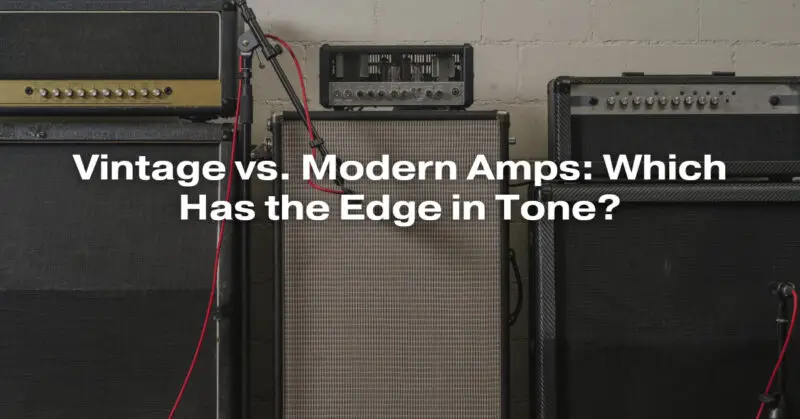The debate between vintage and modern guitar amplifiers often revolves around tone and other factors. Both vintage and modern amps have their strengths and unique characteristics, and the choice ultimately depends on your preferences and playing style. Here’s a comparison of vintage and modern amps in terms of tone:
Vintage Amps:
- Tone Characteristics: Vintage amps are known for their warm, organic, and often slightly compressed tone. They can produce rich, harmonically complex overdrive when pushed, making them popular for classic rock, blues, and jazz.
- Speaker Choice: Vintage amps are often paired with traditional paper-coned speakers, which contribute to their warm and smooth sound.
- Simplicity: Vintage amps tend to have simpler control layouts with basic EQ controls, making them user-friendly and easy to dial in.
Modern Amps:
- Tone Characteristics: Modern amps offer a wide range of tones, from pristine cleans to high-gain saturation. They are known for their versatility and ability to cover various musical genres.
- Speaker Choice: Modern amps may use a variety of speaker types, including traditional and modern materials like neodymium and aluminum. This versatility allows for a broader sonic palette.
- Feature-Rich: Modern amps often come with advanced features like built-in effects, channel switching, and tone shaping options. These features enhance flexibility and convenience.
Considerations:
- Playing Style: Your playing style and the genres you prefer can heavily influence your choice. Vintage amps are favored for classic rock, blues, and vintage tones, while modern amps excel in versatility and high-gain applications like metal.
- Versatility: Vintage amps tend to excel in a specific tonal range, while modern amps offer a broader spectrum of sounds. If you play various styles, a modern amp may be more suitable.
- Maintenance: Vintage amps may require more maintenance due to their age, whereas modern amps are typically more reliable and easier to maintain.
- Availability: Vintage amps can be more challenging to find, and they may come with a higher price tag due to their collectible status.
In the end, there is no definitive answer as to which type of amp has the edge in tone because it depends on your personal preferences and the music you play. Some guitarists prefer the vintage warmth and character of older amplifiers, while others appreciate the versatility and modern features of newer amps.
The best approach is to try out different amps, vintage and modern, and see which one resonates with your playing style and tone preferences. Additionally, consider how well the amp complements your guitar and the type of music you want to create. Ultimately, the “right” choice is the one that inspires you and helps you achieve the sound you’re looking for.

